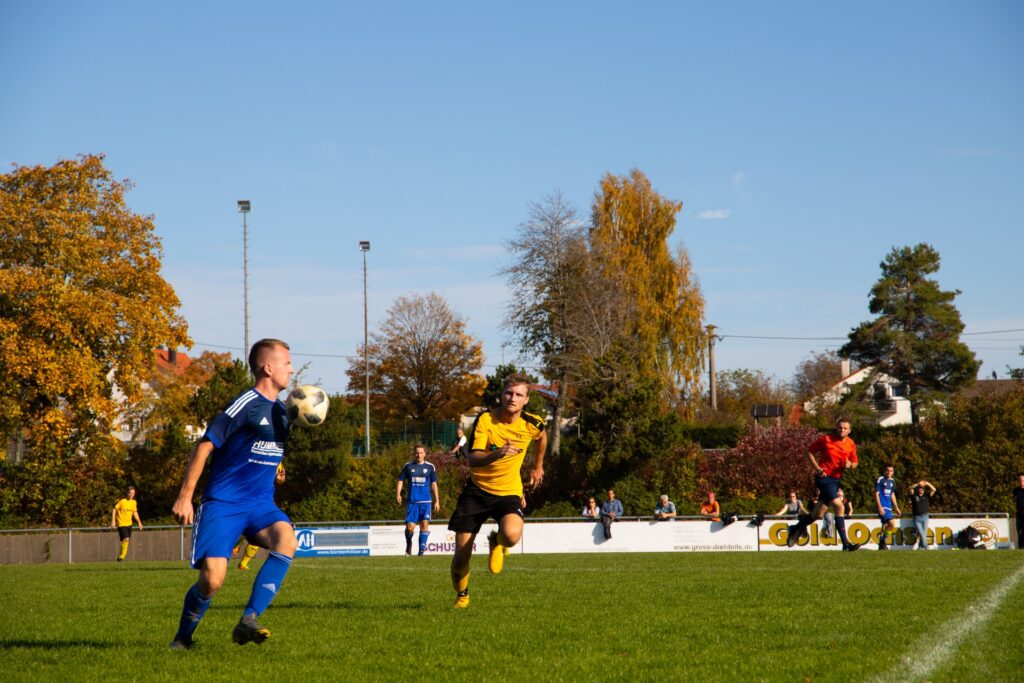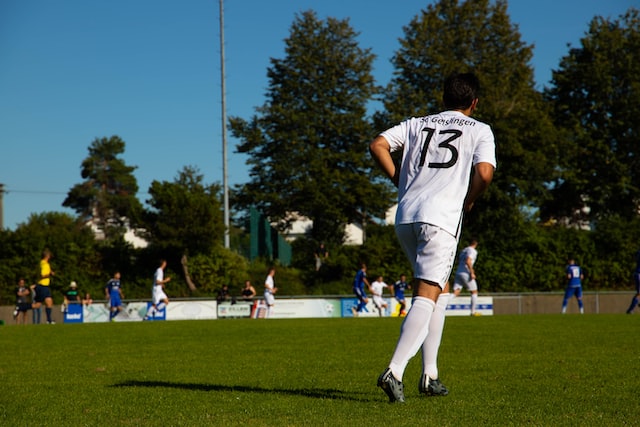At the end of the game, you’ll often see players exchanging jerseys as mementos for their collection. A few even get carried away when celebrating a goal and remove their jerseys.
Ever-increasingly, you’ll notice that male players are wearing what look like athletic bras or vests during the game. What are these vests? Why does every professional player seem to wear one?
Let’s take a look at this equipment that every professional seems to wear and what’s the reason coaches insist on players having them.
So, why do soccer players wear bras?
The sports vests (bras) that male professional soccer players wear collect fitness data. Coaches receive information on a player’s movements and health analytics from GPS technology within the athletic vest. This allows coaches to better assess performance through a more rounded view of each player.
Rather than blindly assuming or guessing many of the game’s statistics, GPS vests provide accurate data that can inform coaches of the tactical or personnel tweaks they could make to their side.
The vests are designed to be worn with very little obstruction to the player’s movement and cause no danger to opponents.
You might be thinking that a lot of this information can be gathered from a sports watch, which is true, but you’ll rarely see players wearing GPS devices on their wrists.
The simple reason for that is that a lot of referees deem wearing watches as dangerous. It’s a bit of a gray area in the rulebook because although GPS technology is now allowed, bracelets are prohibited, so ultimately, it comes down to the officiating team’s definition of dangerous equipment.
When did players start wearing GPS bras?
Reportedly, GPS technology has been part of the game since 2008, but it would take a while longer to reap the full benefits of the technology.
Not averse to innovative ideas, Manchester United was an early adopter of the technology, utilizing GPS in training sessions to monitor fitness and work rate.
Governing bodies within the sport weren’t easily convinced about allowing the use of GPS that we see today, hence why it took longer than perhaps predicted for clubs to begin exploiting the technology.
Wearable GPS trackers were given the green light for use in professional soccer games in 2015 and have become a key component to the coaching staff in elite leagues everywhere.
What data do GPS bras in soccer reveal?

Within the information sent from the GPS vests to coaches is how many sprints a player performs and at what speed, overall distance covered, and comparisons to other players on the field.
Heat maps provided by the GPS vests sent to coaches’ tablets in the dugouts highlight what areas of the field players are exerting the most amount of energy. This is particularly useful for positional analysis, indicating to coaches whether players are out of position or where they naturally drift towards.
Knowing, on average, how many miles or sprints a player performs over any given amount of time allows coaches to limit what they put their players through, decreasing the risk of injuries.
Marcelo Bielsa feels it’s more beneficial to use the GPS trackers in his training sessions (which have been coined “murderball”) than in actual games because of the number of stoppages that a competitive game has that is outside of his control.
At least in training, Marcelo can determine the intensity and speed of ongoings for as long as he wishes, giving his staff a clearer idea of the true nature of a player’s fitness.
What are the benefits of GPS bras in soccer?
- GPS data is sent to coaches immediately and during matches, meaning they can make informed decisions regarding tactics and substitutions based on analysis of player statistics.
- They’re highly accurate, so instead of guessing on certain observations as a coach, you can rely on precise data and not need to worry about misinformation being fed through to you.
- Injuries can occur from increased workloads, which is why the GPS vests present data on the average number of exertions any specific player typically goes through, making coaches aware of what their limits are.
- Rather than wearing fitness tracking watches, which referees could deem as dangerous equipment and ban players from wearing, the GPS vests are subtle, being barely noticeable to fans and the players wearing them.
- Measurable data increases competition between players, as Tottenham Hotspur players have proven during Mauricio Pochettino’s reign at the club. Friendly rivalries incentivize players to go one step further.
Are GPS bras comfortable?
According to an amateur player who tested out the technology, the GPS vests are comfortable and don’t impinge on your playing ability.
There is a range of sizes and designs suited to different body types, so, assuming you are wearing the correct size, the GPS vest should fit well.
Some even attest to forgetting that they’re wearing a GPS vest once entirely once they’re in motion and focused on the game.
Are GPS bras expensive?
GPS vests aren’t cheap. Establishing such data takes a remarkable amount of technology, with a lot of scientific research conducted.
The better devices with a higher degree of accuracy and superior analytical data will cost more than alternatives with fewer features.
You may be tempted to opt for cheaper versions, but they’re less likely to be reliable and are unlikely to have as many features as the pricier alternatives.
For instance, the Catapult One GPS soccer vest retails at $179.99, and it’s a product trusted by elite sports teams around the world. So, if you’re looking to invest in GPS bras for your soccer team, the Catapult One is perhaps the best option available.
Do players wear GPS bras in other sports?
All 32 NFL franchises have struck deals with Catapult, a company that provides technological innovations.
Players can have tailored workouts depending on their fitness levels following the off-season and record intricate data from the number of passes attempted to where in the body contact is usually initiated.
Many rugby players also wear GPS vests to measure data that could be considered similar to the NFL.
Field hockey is less of a contact sport but has its peaks and stoppages, much like football. Coaches in field hockey analyze the data in the same way that coaches in other sports would.
Recap: Why do soccer players wear bras?
Mystery solved! GPS technology has revolutionized soccer analysis and will only become more advanced and relied upon as time goes on.
Further innovations designed to enhance the beautiful game are welcome, and we’re looking forward to seeing what comes next.

